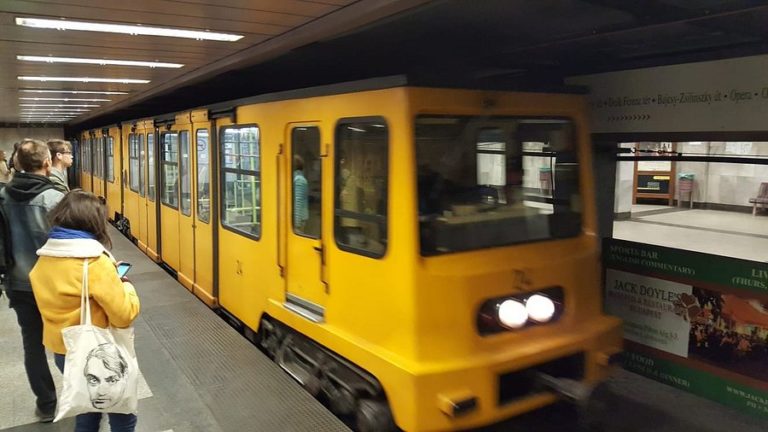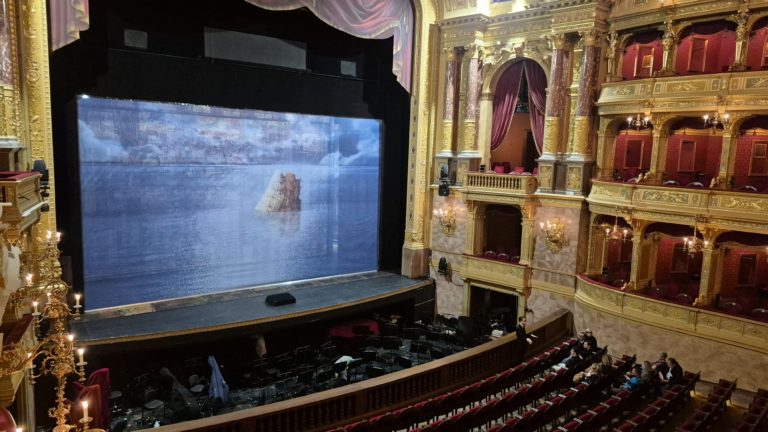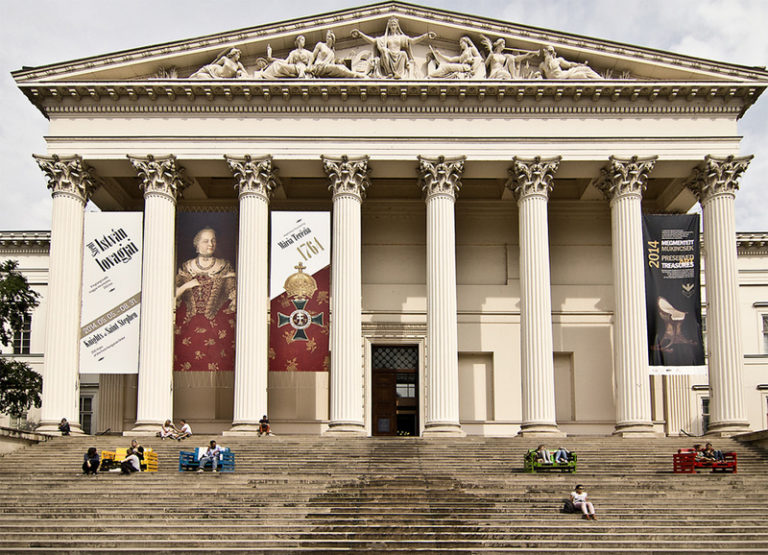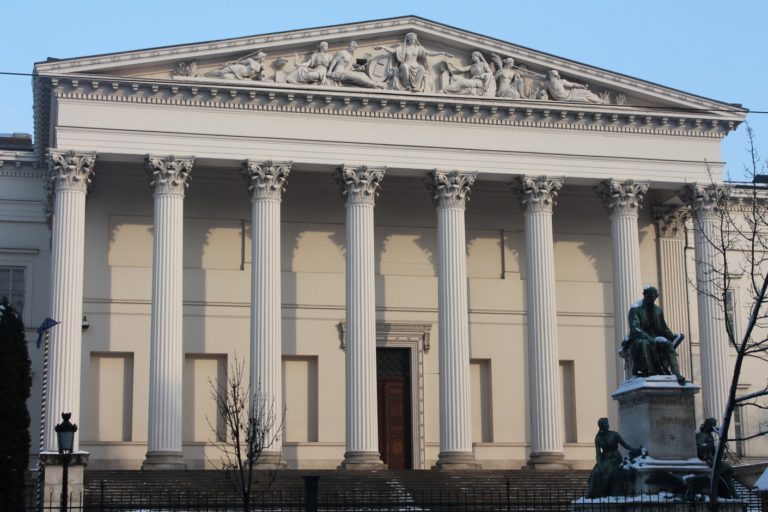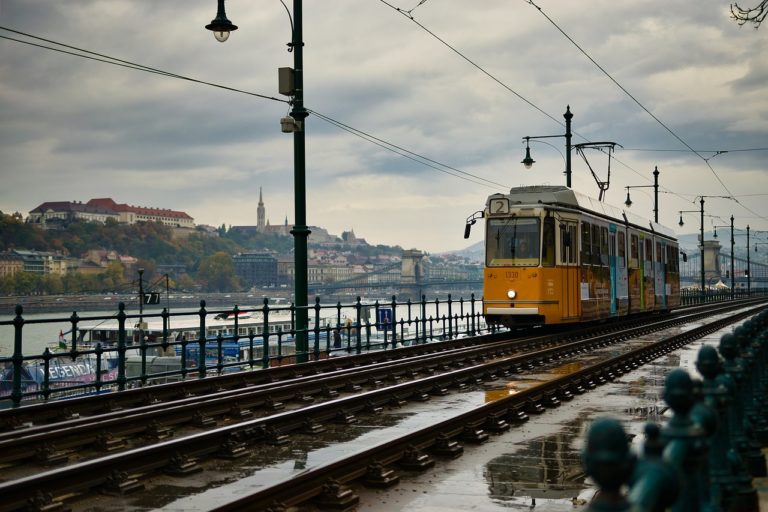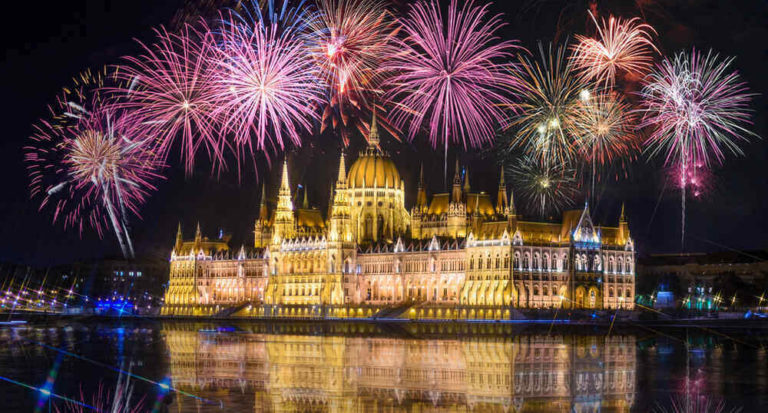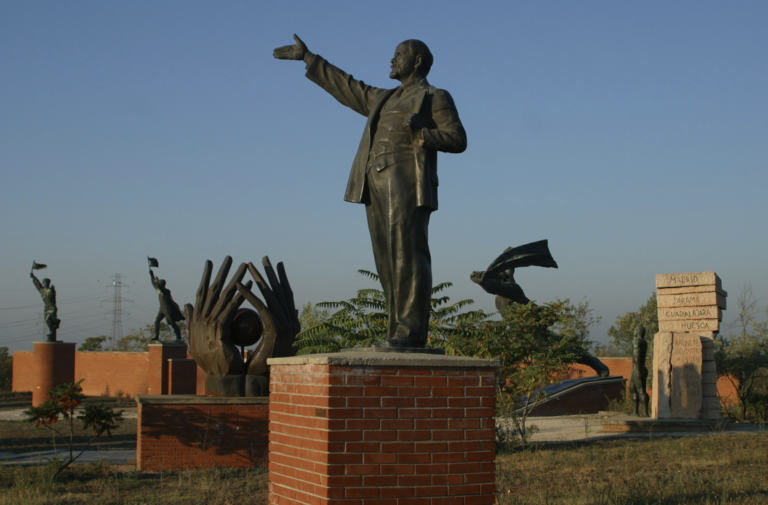Just a few kilometers from the center of Budapest, away from the crowds of classic tourist routes, lies a surprising and still little-known spot: Római-part. This charming stretch of Danube riverbank offers nature, sports, gastronomy, and even a city beach. Located in the 3rd district, this area has been a favorite summer relaxation spot for the capital’s residents for decades. A Roman Name, a Roman Legacy The name “Római-part” literally means “Roman Riverside”, and for good reason. The area is located near the ruins of Aquincum, the Roman city that served as the capital of Pannonia Inferior around the 2nd century AD. Originally a military camp, Aquincum grew into a vibrant settlement of over 30,000 people, complete with amphitheaters, thermal baths, temples, aqueducts, and paved roads. Today, visitors can explore its impressive remains at the Aquincum Museum and Archaeological Park, just minutes from Római-part — a must-see for anyone interested…
The Millennium Underground line, known in Hungarian as ‘Kisföldalatti’ (literally ‘the little underground’), represents a major milestone in the history of urban transport not only in Hungary, but in Europe as a whole. Inaugurated on 2 May 1896, in commemoration of the 1,000th anniversary of the arrival of the Magyars in the Carpathian Basin, this line became the first electric metro on the European continent, surpassing similar systems in cities such as Paris (1900) and Berlin (1902).Built in record time and with a clear forward-looking vision, the Millennium Underground was not only a technical achievement, but also a statement of modernity by Budapest, which at the time was part of the burgeoning Austro-Hungarian Empire. The line was designed to improve the connection between the city centre and the City Park (Városliget), facilitating access to the millennium celebrations and the exhibition grounds.Unlike later subways, this line was built just below Andrássy…
When I thought of visiting the Budapest Opera, I didn’t expect much. I am not an opera buff, nor did I know much about Hungarian musical history. I only knew that the building was beautiful on the outside and that, for the price of a museum ticket, I could peek inside one of the most famous theatres in Central Europe. What I didn’t know was that this visit – short, guided, without a full performance – would end up teaching me more about Budapest’s cultural history than any monument in the city. The first impression: the fachade on Andrássy Avenue Located on the majestic Andrássy Avenue, the Hungarian State Opera presents itself with a neo-Renaissance façade that commands respect. As I approached, I was impressed by the elegance of its architectural details: sculptures of famous composers, such as Franz Liszt and Ferenc Erkel, guard the entrance, inviting visitors on a…
Budapest is a cultural epicentre where folk music resonates as an echo of the past. This tradition, deeply rooted in the national identity, has evolved along with society, adapting to historical changes while preserving its unique essence. Below, we explore traditional instruments, musical styles, venues for live performances, representative artists and groups, the history and evolution of Hungarian folklore, and its influence on contemporary music. Traditional Instruments and Musical Styles Hungarian folk music is distinguished by its diversity of instruments, each with a specific role in creating its characteristic sound. Among the most emblematic are: These instruments give life to distinctive musical styles. The verbunkos, originating in the 18th century as a military conscription dance, combines slow and fast sections, reflecting the contrasting Hungarian character. The csárdás, another popular dance, alternates slow (lassú) and fast (friss) rhythms, creating a dynamic experience. Both styles use pentatonic scales and dactylic rhythms, unique…
The Hungarian National Museum, or Magyar Nemzeti Múzeum, stands as a key institution in the heart of Budapest, acting as the main repository of Hungarian history, art and archaeology. Its mission encompasses the presentation of the rich and complex history of Hungary and the Carpathian Basin from prehistoric times to the present day. Housed in an impressive neoclassical building, the museum not only houses a vast collection of artefacts, but also serves as a symbol of Hungarian national identity. The purpose of this article is to offer a detailed overview of this important museum, providing practical information for visitors and highlighting its profound cultural and historical significance. Practical Information for Visitors For those planning to explore the treasures housed in the Hungarian National Museum, practical information is essential to facilitate the visit. The exact address of the museum is Múzeum körút 14-16, 1088 Budapest, Hungary. Its central location in Budapest…
Navigating through Budapest has never been easier, thanks to Budapest GO, the official app designed to help locals and tourists move around the city seamlessly. From real-time schedules and ticket purchases to route planning, the app offers a range of features aimed at simplifying travel. But is it the perfect transit companion? In this article, we’ll explore everything Budapest GO has to offer, how to use it effectively, and what features it still lacks to become a truly flawless tool for commuters. Public transports Metro (Subway) – Budapest has four metro lines (M1, M2, M3, M4), showing their routes, stations, and connections, providing fast underground connections. Trams – Popular tram lines like the scenic Tram 2 along the Danube and other key routes are marked on the map. Buses – The app covers Budapest’s urban bus network, showing regular, express, and night bus routes, along with their stops and schedules.…
Budapest is a city full of history in its streets, ideal for travellers on a budget. The Hungarian capital offers a wide range of free activities that allow you to discover its heritage, art and culture without overspending. Here you’ll find recommendations and practical tips to help you enjoy the city on a budget. Free Tours and Walking Routes One of the best ways to get to know Budapest is to take part in free walking tours, led by local guides who share anecdotes and historical details of every corner of the city. What do It offer? Thematic and Regional Tours: Tours range from the Old Town and iconic quarters (such as VII and VIII) to routes exploring Jewish history, urban art and local legends. In addition, there are options for night tours to enjoy the illuminated city. Variety of Options: Some companies even offer bike tours or alternative routes…
Budapest’s trams are more than just a mode of transportation; they’re a city institution. With their extensive network that winds throughout the historic center and beyond, they offer a unique and charming way to explore the city, immersing oneself in its vibrant and history-rich atmosphere. A Step Back in Time Aboard Iconic Historic Trams Budapest’s tram network boasts a fleet of historic trams dating back to the early 20th century. These vintage trams, elegantly restored and meticulously cared for, offer a truly special travel experience. Stepping aboard one of these trams is like taking a step back in time, reliving the atmosphere of Budapest from another era. The historic trams are equipped with fine wood furnishings, gas lamps, and sash windows, creating a nostalgic and romantic ambiance. A Panoramic Way to Explore the City Budapest’s trams are not just a means of transportation; they’re also an excellent opportunity to admire…
Introduction to Budapest’s Cultural Scene Budapest, with its rich cultural heritage and dynamic contemporary scene, offers a plethora of festivals and events that reflect the city’s vibrant spirit. From world-class music festivals to enchanting Christmas markets, Budapest provides travelers with a unique insight into Hungarian traditions and modern culture. During my visit with a group of friends, we immersed ourselves in some of the city’s most iconic cultural events, creating unforgettable memories along the way. Budapest International Documentary Festival One of the highlights of everyone’s trip in Budapest is attending the Budapest International Documentary Festival. This event is a significant fixture on the global documentary film circuit, showcasing a diverse range of thought-provoking films from around the world. The excitement in the air is palpable as you can attend several screenings, each offering a unique perspective on global issues. Engaging in post-film discussions with filmmakers and other attendees is definitely…
Budapest, a city rich in charm and history, houses an unexpected treasure within its walls: the Memento Park. This open-air museum, located on the outskirts of the Hungarian capital, offers a unique and evocative experience, transporting visitors back in time to the era of the communist regime. A Monumental Park that Narrates a Complex Past Memento Park houses a collection of giant statues and monuments dating back to the communist period (1949-1989).Once symbols of the regime, these imposing works of art were removed from Budapest’s streets and squares after the fall of communism, finding new life in this park. Among the most iconic figures are those of Lenin, Marx, Engels, and Béla Kun, leader of the brief Hungarian Soviet Republic of 1919. An Emotional Journey through Reflection and Remembrance Strolling among these monumental statues, reaching up to 15 meters tall, is not just a suggestive experience, but a true journey…


